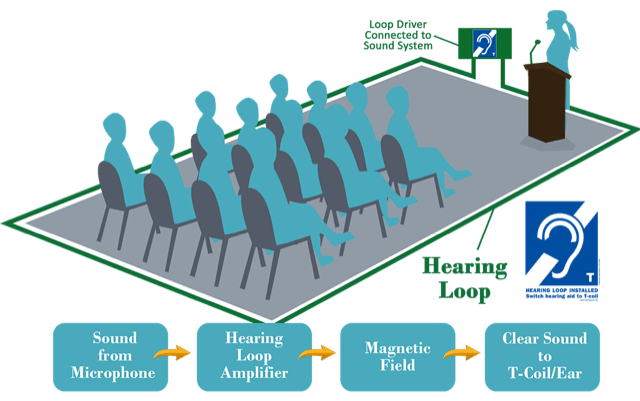Audio induction loop systems, also called audio-frequency induction loops (AFILs) or hearing loops , are an assistive listening technology for individuals with reduced ranges of hearing.
A hearing loop consists of a physical loop of copper wire or an array of looped copper wires which are placed around a designated area, usually a room or a building. The hearing loop is connected to the house PA system and the copper wire generates a magnetic field throughout the looped space which is picked up by the t-coil and the sound bypasses the PA speaker system and is broadcast directly into the hearing aids or cochlear implant via the hearing loop.
Modern loop drivers (amplifiers) have high frequency compensation adjustments. Frequency response is the most critical purpose of assistive audio. It doesn’t much matter if the sound is loud enough when there is not enough high frequency in the audio to be able to tell the difference between “cat”, “fat” or “tap”.
A hearing loop would provide those people attending the event to hear only the person or persons speaking thus providing them with the clarity and understanding of speech necessary to enjoy the performance without reverberation and ambient background noise. The person can maintain their privacy by simply touching a button on their hearing aid or cochlear implant at the beginning of a the performance. There are specialized hand-held hearing loop receivers for individuals without hearing aids or cochlear implants.

The loops carry baseband audio-frequency currents; no carrier signal is used. The benefit is that it allows the sound source of interest—whether a musical performance or a ticket taker's side of the conversation—to be transmitted to the hearing-impaired listener clearly and free of other distracting noise in the environment. Typical installation sites include: places of worship, concert halls, ticket kiosks, high-traffic public buildings (for PA announcements), auditoriums, courtrooms, meeting rooms, and homes.


